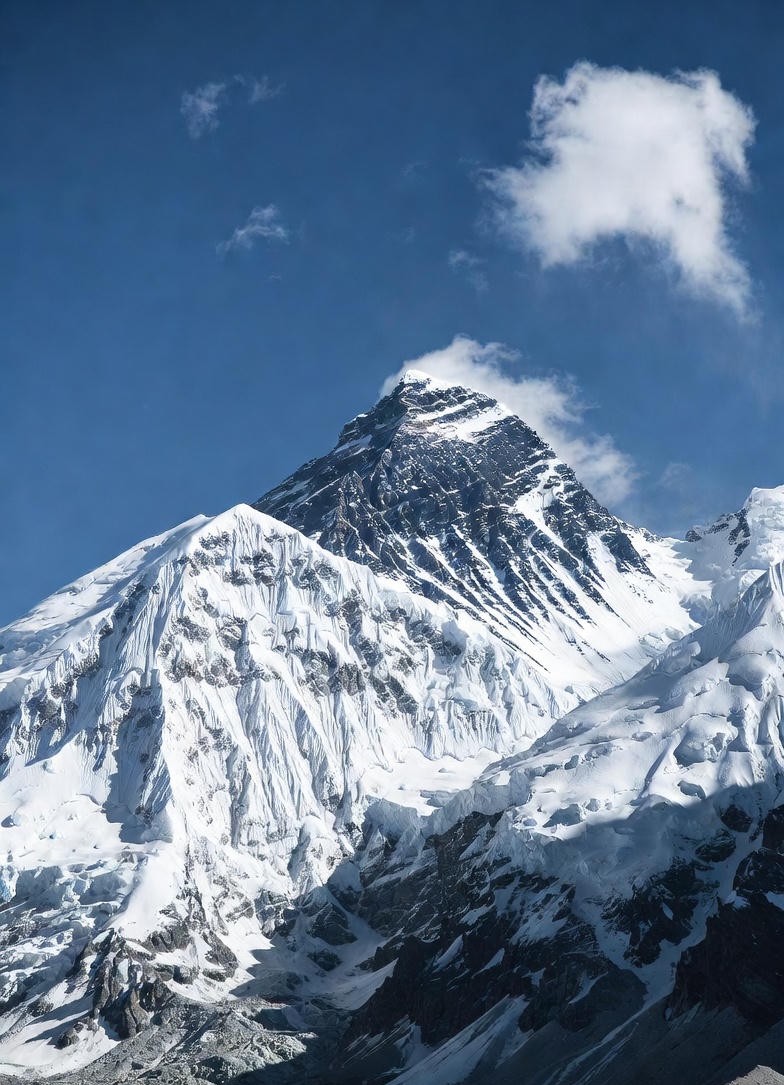1. The Titanic Clash: Birth of the Himalayas
Mount Everest is not just a high point; it is the crowning achievement of the most immense continental collision in Earth's geological history. The story began approximately **50 million years ago** when the **Indian Tectonic Plate**, traveling northward at a remarkable speed (for a continent), slammed into the much larger **Eurasian Tectonic Plate**.
This wasn't a quick crash; it was a slow, relentless grinding. The Indian Plate continues to push forcefully beneath the Eurasian Plate—a process known as **continental collision**. This immense horizontal pressure had nowhere to go but up, resulting in the massive folding, faulting, and stacking of the crust that created the Himalayas, and specifically, Mount Everest.

2. Everest's Annual Growth Spurt: The Uplift Rate
Unlike most mountain ranges that stabilize after millions of years, the Himalayas remain geologically active because the Indian Plate is still moving northward at a rate of about 5 centimeters (2 inches) per year—roughly the same speed your fingernails grow.
This immense, relentless push translates into vertical growth for Everest. Geologists estimate that the peak is currently rising at a rate of approximately **4 to 6 millimeters (mm)** annually. While this seems minuscule, it signifies that the mountain is gaining almost half a meter in height every single century. This continuous upward motion firmly establishes Everest as a "living" mountain in geological terms, constantly pushing its own record higher.
3. The Geological Paradox: Sea Fossils at the Summit
Perhaps the most mind-boggling fact about the world's highest terrestrial point is the discovery of **marine fossils** near its summit. Specifically, the limestone and sandstone that form the top section of Everest (known as the Qomolangma Formation) contain ancient organisms like trilobites and crinoids.
This is a profound geological paradox: creatures that once swam at the bottom of the ocean are now found at the highest point on Earth. The explanation is simple yet awe-inspiring: these rocks were once the sedimentary floor of the **Tethys Ocean** that separated the two continents. When the plates collided, these ocean floor rocks were the first to be compressed, folded, and thrust thousands of meters skyward, carrying their fossilized history with them.
4. The Constant Battle: Uplift vs. Erosion
Everest's survival at its current height is a fragile balance between two colossal, opposing forces. On one side, the **tectonic uplift** continuously pushes the rock mass higher. On the other side, the intense high-altitude weather—powerful winds, freezing temperatures, and ice—aggressively works to tear the mountain down through **erosion**.
The high altitude means the effects of erosion are amplified; freeze-thaw cycles break rock into fragments (known as rock flour) very quickly. Without the relentless push from the Indian Plate, the destructive forces of erosion would long since have worn Everest down to a much smaller height. The mountain's current elevation is a dramatic snapshot of this ongoing, dynamic battle.
5. Redefining the Record: The New Official Height
Because of the continuous geological movement and seismic events, the official height of Everest is constantly debated and requires periodic re-measurement. For decades, the widely accepted figure was 8,848 meters (29,031 ft).
However, the powerful **2015 Nepal earthquake** caused significant crustal movement and potentially altered the mountain's height. Consequently, Nepal and China undertook independent but simultaneous surveys. In 2020, they jointly announced the new, definitive official height: **8,848.86 meters (29,031.7 feet)**. This slight, measurable increase confirms that Everest is not a static feature but a dynamically evolving giant.
*Note: This height is measured to the highest point of solid rock and snow/ice cover, unlike the Challenger Deep, which measures depth to the absolute ocean floor.*
Interested in more geographical extremes? From the world's deepest point (Mariana Trench) to its highest (Mount Everest), continue your journey through our Geography category!